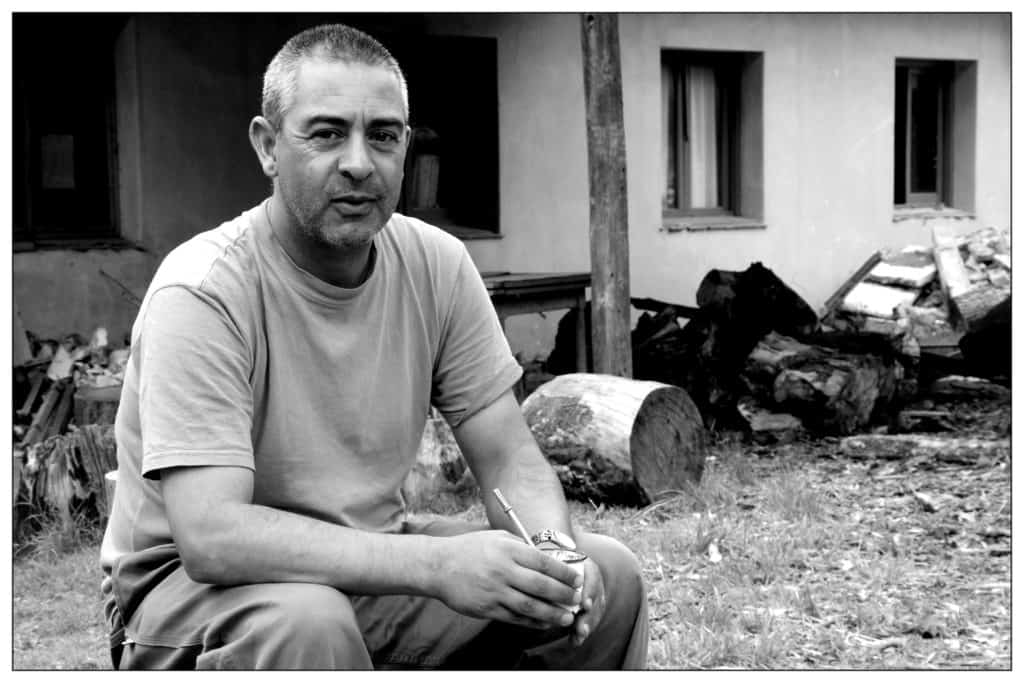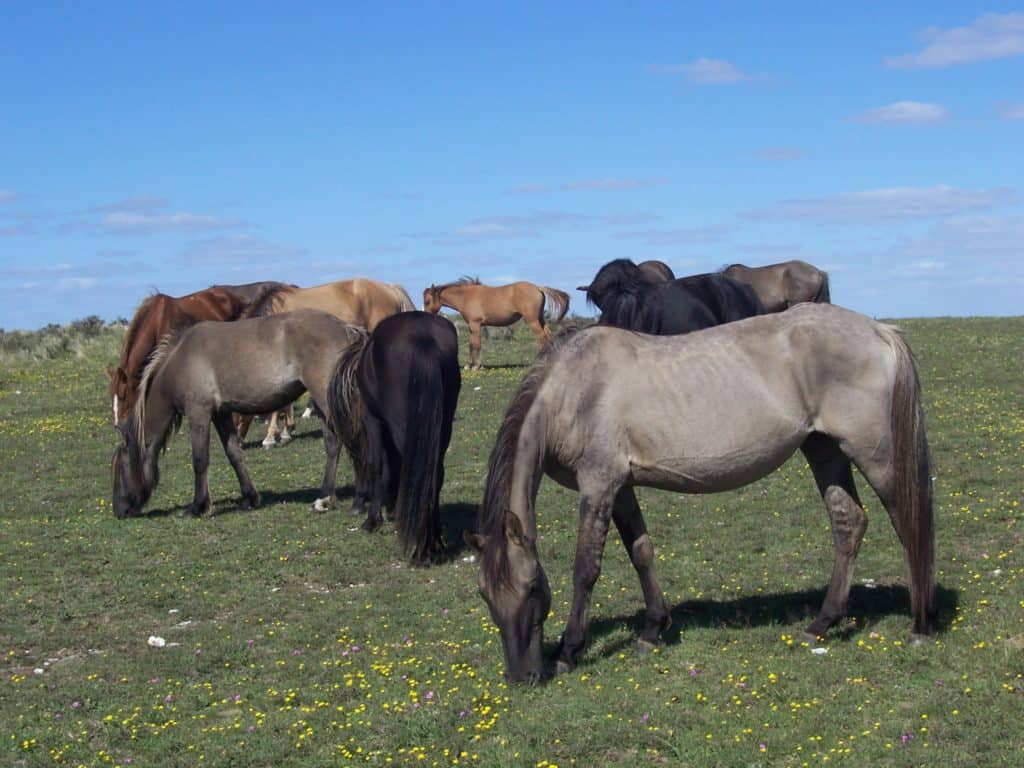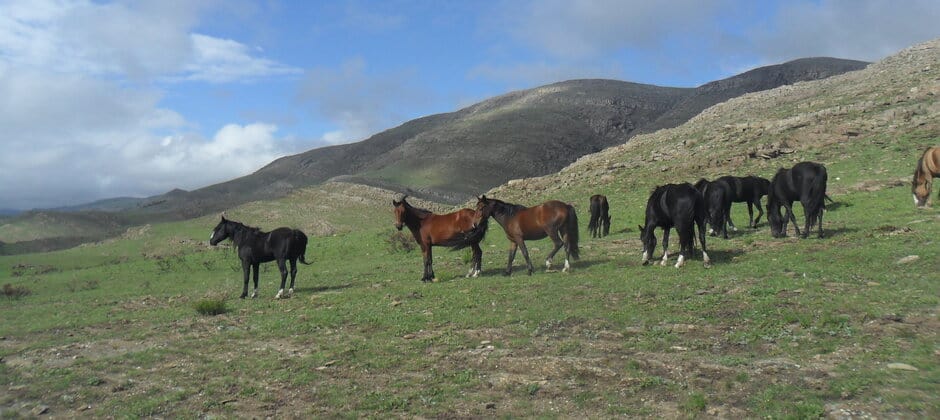Share this article
JWM: Lightning strike points to feral horses’ toll
Although it was lonely being by himself in the middle of the Argentine Pampas, the last thing Alberto Scorolli wanted was to meet a friend. He’d been hiking through the tumbling green hills of Ernesto Tornquist Provincial Park located southwest of Buenos Aires in pursuit of feral horses. But all of the hours spent trying to get close enough to observe the animals went to waste when a friendly staff member from the park, a gaucho named Facundo, came galloping across the landscape to give him a salute.
“He would come to say hello and I would say ‘Sorry friend, but I hate you,’ because he caused a stampede of feral horses,” said Scorolli, a researcher and a professor of vertebrate zoology at the National University of the South in Bahia Blanca. “I would be exhausted trying to run through the hills after my work,” he joked.
Scorolli has studied feral horses (Equus caballus) for about 25 years in Argentina. His observations have helped him build a new model that correlates the carrying capacity of the grasslands ecosystems with the average body fat of horses.
“We think it’s a promising index,” said Scorolli, the author of the study published recently in the Journal of Wildlife Management.

Alberto Scorolli has worked with horses in the Pampas since 1995. Credit: Paula Siracusa
Starting in 1995 as post-graduate research, Scorolli decided to study feral horses, since the Ventana Hills were close to where he was based in Bahia Blanca, an area he calls “one of the last relics of the grasslands Pampas not modified by man.”
Most of the Pampas, a region of cultural importance to the country, has now been farmed or developed — only Tornquist remains wild. The park holds a number of endemic plant species, grasslands birds and even an endemic snail. Some researchers believe the large number of feral horses in the area may also outcompete the native guanaco (Lama guanicoe), the wild cousin of llama (Lama glama), used to describe the domesticated form of the animal.
“We have many endemic species, but we have no data about the impacts [of horses],” Scorolli said.
He continued to observe horses, walking through Ernesto Tornquist Provincial Park for eight-hour days with binoculars, recording numbers, body condition and other data. He could identify individual horses based on their unique coat coloration and patterns of white spots. Despite the occasional run-in with stampedes and friendly gauchos, and enduring temperatures that varied between -7 Celsius in the winter and 40 degrees Celsius in the summer, he loved his work.
As part of his research, he estimated mortality each year from different age groups of horses. He found that by 2002, the horses seemed near the area’s carrying capacity — a population of 240 adult females with a density of 35 horses per square kilometer — one of the densest populations of wild horses in the world.
“The environmental impact was absolutely visible,” Scorolli said. “It was astonishing how short the grass was.”
But the crowds of horses weren’t destined to last. That year, a massive thunderstorm hit the region, and lightning killed hundreds of horses in the park. Subsequent surveys showed that the survivors had more body fat, suggesting they benefited from having fewer competitors.
Scorolli kept observing the herds, which continued to grow again until 2007. This time, the government intervened, rounding up and removing about 200 horses. Afterward, the horses that remained seemed to benefit once more, carrying more body fat than they had before the roundup.

Horses are currently at carrying capacity in the provincial park. Credit: Alberto Scorolli
Decades of data revealed what he’d seen on his hikes through the park — the average body fat correlated with the density of horses on the landscape, and also allowed Scorolli to construct a population model and validate it.
He believes that the index he’s proposed could be applied to other cases that have wild horse management issues, like the western U.S.
But Argentina shares many of the same public perception problems wildlife managers in the U.S. face. After the last roundup in 2007, some of the horses were relocated, while others were euthanized. After a public outcry, he said, the government largely stopped removing the animals.
“[Politicians] lost voters, and every vote counts,” Scorolli said.
Meanwhile, the horse population continues to grow and could be putting native plant and wildlife species at risk. While guanacos are plentiful in other parts of the country, only a few dozen remain in this region, for example. During the last few years, despite lobbying from Scorolli and his university to manage the population, the density is just about as high as it was before the lightning storm in 2002.
“We are almost 20 years back,” Scorolli said.
This article features research that was published in a TWS peer-reviewed journal. Individual online access to all TWS journal articles is a benefit of membership. Join TWS now to read the latest in wildlife research.
Header Image: Horses in Ernesto Tornquist Provincial Park in Argentina. Credit: Alberto Scorolli








